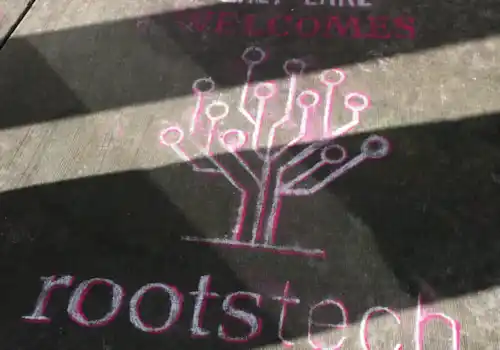02 January 2024
|
Michelle Patient, professional genealogist and keen embroiderer, explains how best to start a family history sampler project.
Passionate genealogist and embroiderer Michelle Patient explains the steps you can take to create a very special future heirloom - a sampler that contains the names of your family members - and perhaps also some of your ancestors.
Michelle writes:
Firstly, you might enjoy belonging to a group of stitchers who share your interest and can help. One group that meets over Zoom so you don’t need to live nearby is The Sampler Guild.
Equipment for creating your sampler
Cross stitch is a gridded technique, so you will need graph paper and pencil, or software to create your chart to stitch from.
Fitting all the names and symbols and the alphabet you like, lends itself to a sampler in two sections, the alphabet usually at the top including the various initials of family members, perhaps colour coding the generations.
Then in the area below randomly placed “spots” reflecting your symbols. Something along the lines of the 1859 example shown here.
Alternatively, Quaker samplers are very flexible, with symbols easily exchanged from the centre of motifs. Letters can be scattered in spaces to represent the people in the family.
Creating your design
There are a number of freebies around that you can cut and paste from to design something personally relevant such as this one at Free X Stitch.
Thinking about thread
Almost all samplers today are stitched on linen, using standard cotton thread from DMC or Anchor; I wouldn’t suggest using silk threads if you are an inexperienced stitcher.
The thread count of the fabric determines two thing:, the finished size of a piece and the thickness of the thread needed to cover effectively. You will need a good white light and magnification
to use higher counts.
Most people starting out use 28ct and two strands of DMC crossing over two threads of linen, which means there are 14 stitches to each inch.
Needle size also depends on these decisions, the smaller the openings in the weave of the fabric, not only the less strands of thread but the finer the tapestry needle. Cross stitch uses blunt needles to push between the weave of the fabric (the ground) rather than piercing through. For a 28ct linen most use a size 24 tapestry needle, I have stitched for many years and prefer 40ct linen, and use a 28 size needle.
Useful help web pages include:
• How to cross stitch on linen fabric
Sampler supplies
Suppliers are usually speciality shop. As I live outside the UK I don’t have a local shop I have used, but the UK stitchers I follow tend to buy from two shops: Patchwork Rabbit and Lakeside Needlecraft.
Hands Across the Sea and Whilst Iris Naps are my favourite UK designers; they may have a chart containing an alphabet that you wish to use, so buying that chart would give you some info to base your design on.
Your local library is another place to check out for charts to use for the symbols you decide are appropriate. You can use graph paper to plan and chart the layout. The final size is determined by the number of stitches both in height and width and the count of the fabric. I would suggest practicing on a small free chart (for instance here) to start with to see if you a) enjoy the technique and b) get an idea of the time it will take.
Click here to download a Word document of Michelle’s useful references for studying and creating samplers.
About the author
Michelle Patient is a genealogist, computer geek and DNA enthusiast, with qualifications in chemistry, geology and family history. Michelle volunteers for several genealogical societies, is a member of the Association of Professional Genealogists (APG) and is one of the professional consultants behind the Australian SBS television series 'Every Family Has a Secret'. She co-hosts 'Talking Family History' with Fiona Booker. You can find out more about her work here.
Sampler image family register sampler by Abigail Barnard (1806-85), Google Art Project. Collection: Cooper Hewitt, Smithsonian Design Museum.








